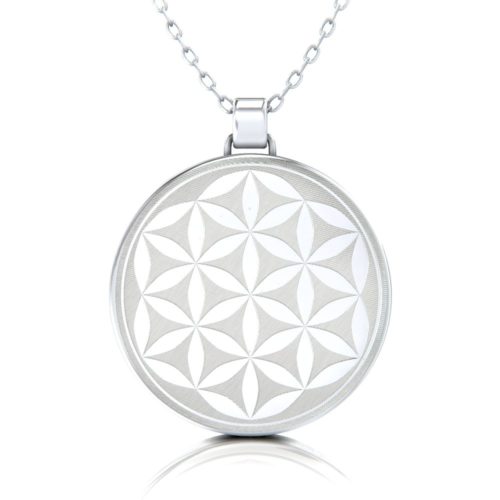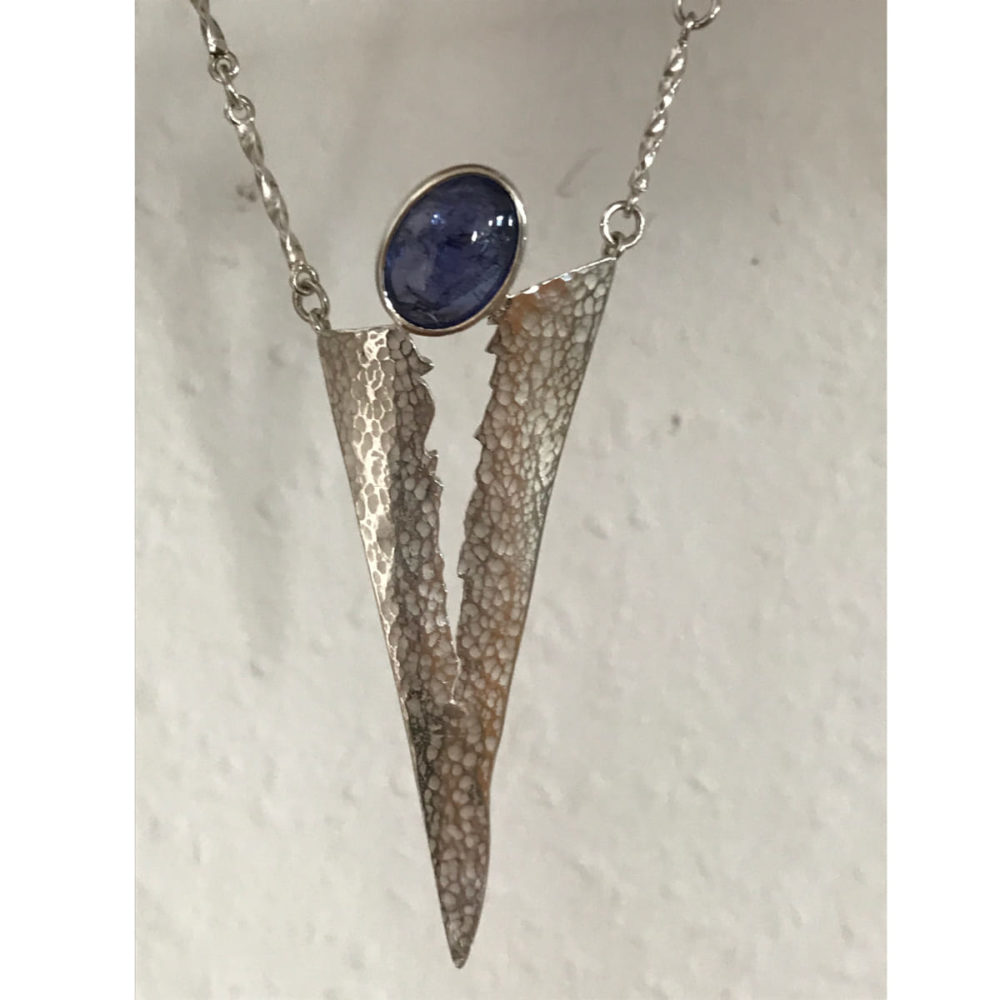Minerals
Occurrence
Minerals are components of almost all types of rock on earth and celestial bodies. The 30 The most common minerals are known as rock formers. Minerals can also be found in water as colloids or in the form of fine dust in the air. If water is in the form of ice, so it is also one of the minerals.
Exceptions and delimitations
homogeneity
Fabrics, referred to as chemical compound or chemical elements, have a clearly defined chemical structure. Such mixtures of substances are not minerals. However, there can be certain variations in the composition of minerals. Such minerals are called mixed crystals, provided, they are structurally homogeneous.
Chemical compounds can exist in different structures. Uniform chemical mixtures are also not considered to be minerals, the different phases of which have different structures. The flint or chert, for example, consists of pure SiO2, but is not one of the minerals. Instead, it is a mixture of the structurally differing minerals mogánite, Deep quartz and opal and are therefore among the rocks.
Crystallinity
Some of the naturally occurring compounds are not considered to be crystalline. There are two categories here:
– amorphous substances: Substances, that have never been crystalline
– metamictic substances: previously crystalline substances, which lost their long-range order due to ionizing radiation.
Often times it is difficult, to separate amorphous phases from each other. That is why science has agreed on it, not crystalline, but to summarize natural compounds under the generic term of mineraloids. The term can mainly be found in American textbooks, in the German-speaking area it is only used very rarely.
Amorphous and natural substances can be listed as minerals under these conditions:
– a complete chemical analysis covers the entire composition range of the substance
– spectroscopic and physicochemical data prove the uniqueness of this substance
– the substance cannot be changed into a crystalline state even by heating and other physical treatment
The best known examples of such minerals are calciouranoite and georgeite.
Minerals can then be metamorphosed substances, if it can be proven, that the starting substance was in crystalline form and of identical composition, as with the Frusonit-Y.
However, liquids are not considered minerals. Water in liquid form is not a mineral, Frozen to ice, however, already. The mercury is an exception here: Since it only occurs in liquid or gaseous form on earth, it is counted among the minerals, even if it is liquid. Petroleum and other bitumen are mixtures of substances and not minerals.
Substances of extraterrestrial origin
Extraterrestrial substances such as those found in meteorites and lunar rocks, arise similar to the minerals of the earth. Therefore, some extraterrestrial stones and dust are also considered to be minerals, for example Brownleeit and Tranquilityit.
Substances of anthropogenic origin
Substances, that man creates, do not count as minerals. Are they identical, they are called synthetic equivalents. Follow-up materials as well, which arise from such synthetic substances as a result of geological processes, are not referred to as minerals. Exceptions are some minerals, which arose from the combination of ancient metallurgical slags with sea water.
Were substances converted through human activity, so only then are they called minerals, when human activity was not directed towards its creation. Substances created by mine fires are not minerals.
Biogenic substances
Biogenic substances such as mussel shells or oxalate crystals are produced exclusively through biological processes, but not generated by geological. They do not count as minerals. Only when geological processes are involved in the creation, these materials can be viewed as minerals. These include minerals, which were formed in black slate from organic substances or from the guano of bats in caves. Components of phosphorites and limestones are also of organic origin.
Mineral bond and importance
Mineral formation
1. The igneous mineral formation takes place from the melt and subsequent crystallization. The hydrothermal and sedimentary mineral formation results from gases and through resublimation, as it takes place on volcanoes.
2. During metamorphosis, minerals are formed through various solid-state reactions from natural glasses or other minerals.
At the same time as the rock, primary minerals are formed as part of it. Secondary minerals, on the other hand, arise from a subsequent change in this rock, for example through metamorphosis, Weathering or hydrothermal overprinting.
There are two phases in the formation of minerals:
The crystallization nucleus is formed by the accumulation of several ions and atoms. If a certain germ radius is reached and exceeded, so it grows and leads to the formation of minerals through crystal growth.
The weathering of minerals then occurs, when several conversion reactions take place with water or air. The ions then go back into the solution. This also takes place when the rock melts in the magma. The same cycle then begins again, but mostly in a different place.
Determination of the cooling point by crack marks
The biomineralization takes place from the solution. Here minerals are formed by organisms. This can result in the following minerals.
– The shells of clams, Snails, Coccolithophores and foraminifera are made from aragonite, Formed vaterite and calcite.
– The bones of vertebrates are made from hydroxyapatite. Mammalian teeth also contain fluorapatite.
– Some living things and also bacteria orient themselves with magnetite in the earth's magnetic field. Mollusks too, insects, Birds, Fish and some mammals have these characteristics.
The formation of minerals can also take place from the solution. Reactions of minerals with water are used in technical mineralogy.
Calcite is used to neutralize acids by creating water hardness. Pyrite is used as a reducing agent in the bacterial elimination of nitrate by means of denitrification. At low pH values, clay minerals can neutralize- and effect ion exchange reaction. The elimination of iron in the context of drinking water treatment can result in goethite. Calcite is released during decarbonization reactions for water softening. Crystals of struvite, which arise during wastewater treatment under high phosphate concentrations, can reduce the diameter of pipes. Corrodes steel and cast iron on contact with water, so become magnetite, Goethite and lepidocrocite released. Malachit, Azurite and cuprite are formed when copper corrodes. In contrast, when lead corrodes, hydrocerussite is formed.
Kristallographie
All minerals are assigned to specific crystal systems. That means, the crystallizing minerals optically take on a geometric shape with natural surfaces and fixed angles. Nicolaus Steno developed the law of constant angles. Symmetrically arranged surfaces show the inner structure of the crystalline minerals. The atomic structure is represented by the repetitive lining up of unit cells. These make up the smallest structure of the minerals.
A distinction is made between six to seven crystal systems based on an internal symmetry. These include the trigonal, the cubic, the hexagonal, the orthorhombic, the tetragonal, the tricline and the monocline system. Sometimes the trigonal and the hexagonal system are unified by mineralogists. Twins are two or more individuals of minerals, which have grown together in defined crystallographic orientations. They can arise both during the growth and during the deformation of rocks. Twin lamellae are often formed from multiple twins. However, these should not be confused with segregation lamellae. The latter arise from the thermodynamic instability of mixed crystals and from the formation of precipitates.
Low-pollutant tap water and a diet rich in minerals lead to good results for human health.
Care must be taken to ensure that minerals are preserved as well as possible in human food, to consume the food as unprocessed as possible. We should eat them in the form, in which nature produces them. It is true that minerals are not necessarily destroyed when preparing food. But it is possible, that they are converted into a compound that is less usable for humans. Some minerals find their way onto the compost when the food is peeled or into the sink when it is boiled.
In recent years there has been an awareness of the careful handling of mineral-rich life- and nutritional supplements and minerals grown. Soils are often depleted due to high usage. As a result, many plants can only absorb a few trace elements, which we get back through the food chain in the form of food or animal feed. The breeding of vegetables and fruits using genetic engineering does not only have advantages: The faster the varieties grow, the fewer minerals they can absorb from the soil. The density of the minerals in our food is decreasing more and more. The natural composition of the individual fruits and vegetables also changes. This means that humans and animals automatically receive fewer minerals in a less favorable mixture.
Petrological importance
The thermodynamic stability of minerals depends on individual pressure-temperature conditions. Will leave these areas of stability, transform the minerals. Some phase changes occur directly, as soon as the stability field is left, for example at high- and deep quartz. Other transformations take millions of years due to kinetic inhibitions. Some thermodynamically unstable modifications remain in the metastable phase, because the activation energy is extremely high. So the thermodynamic equilibrium is frozen, so to speak. Conclusions can therefore be drawn about its origins and history of development from the mineral stock of each rock. Presolar minerals were used to create the earth.
Deposits significance
Property raw materials, Energy raw materials and element raw materials form the category of mineral raw materials.
The energy resources include the minerals thorite and uraninite, which are used as nuclear fuel. Energy resources are used without chemical decomposition by techniques. They include quartz for glass production, various clay minerals, which are used in the ceramic industry. Elemental raw materials are mined to obtain certain chemical elements. Do these consist of a metal, so they are called ores. The term “deposit” describes an enrichment of the raw materials, provided they are economically degradable. Therefore this term is not scientific, but to be understood in purely economic terms. The dismantling decides on the profitability- and processing costs as well as the market value of the extracted metal. In the case of minerals, the iron content must be up to 50 Percent lie, so that financial profit can be achieved. For the much more valuable platinum, a portion of 0,00001 Percent for it.
Classification according to origin is also possible. Sedimentary deposits form during precipitation reactions. This is also possible with weathering processes and the washout of minerals from their area of origin. When surfaces- and deep waters loosen the elements from the surrounding rock and deposit them elsewhere, one speaks of hypothermal deposits. This can also happen with residual fluids from the magma. However, the crystallization of the magma creates igneous deposits, for example that of chromite or platinum. Are rocks transformed, for example marble, so one speaks of metamorphic deposits.
Gemmological meaning
The brilliant cut of diamonds
Many minerals are used to make jewelry. They are then referred to as gemstones, if their hardness is higher than seven and if they are transparent. This is not the case, they are considered gemstones. The diamond does 95 Percent of sales worldwide. The remaining 5 Percent are tourmalines, Smaragde, Sapphires and rubies. With it a jewelry- or gemstone is particularly effective in its beauty, it is ground and then polished.
Many different cut shapes are known: A facet cut is usually used for transparent stones. Here are the facets, the surfaces, in fixed angular relationships to each other. This maximizes the reflection of the light. Smooth and single-surface cuts, on the other hand, are applied to opaque minerals. The cabochon cut creates the asterism effect on a star sapphire. The sparkling fire, which is said to be a brilliant cut, is achieved through this, that very specific angular relationships between the individual facets are maintained when grinding. Only in this way can the white light split up into its individual colors that are visible to the human eye. This process is known as dispersion.
Other meaning of minerals
Some minerals are also used in body care, for example the clay mineral lava earth, that was already used in ancient times, to cleanse the body and hair. Minerals such as talc are used as raw materials in art or in the medical field in the manufacture of tablets.
Both in modern esotericism and in some ancient cultures, the various minerals are used in different ways- and protective effects attributed. In ancient Egypt, for example, carnelian was considered a stone of life, because its color is reminiscent of blood. He was used in funeral rituals, but also as jewelry- and protective stone used for pharaohs. Amber is downright legendary, that of Hildegard von Bingen, from Miletus and from Thales protection- and healing powers were said to be.
But minerals are also sought-after collector's items. They are not only to be found in scientific collections as objects for viewing a mineral inventory, but also in many private collections. Some collectors concentrate on localities or create different systematic collections. Private collectors like to use so-called micromounts. These are very small samples of minerals, which on the one hand can be financed and on the other hand do not require so much space.
Types of minerals
Andalusit
The material of the andalusite comes in the colors purple, green, Brown and gray in front. The stone can change its color depending on the perspective. The first known location of the stone is in Andalusia in Spain, hence its name comes from. Andalusite is mainly used as a decorative object or for the production of ceramics. In addition to Andalusia, he is also in North America, Sri Lanka, Find Brazil and Russia.
Amblygonit
Amblygonite belongs to the mineral class of anhydrous phosphates, which occurs very rarely. Its extremely wide range of colors is particularly impressive. It varies from pink and white to blue and yellow. Amblygonite is a comparatively soft mineral, therefore it is seldom made into jewelry, but most often used in light metal extraction. Its main localities are in the USA, in Namibia and Brazil.
Alexandrite
As chrysoberyl, alexandrite belongs to the mineral group of hydroxides and oxides. He was around the middle of the 19. Discovered in the 19th century. Its name comes from the Tsar Alexander II. back. The optical peculiarity of alexandrite is its unique interplay of colors. Depending on the light source and the available spectral colors, its color gradient can even vary. The chromium content of alexandrite enables the light colors to be reflected. Alexandrite shimmers green in the sunlight, in artificial light, on the other hand, tends to be red. The changing light conditions alone create the unique characteristics of alexandrite, which is also known as the alexandrite effect.
bleaching
Albite is one of the white minerals. Its name is derived from the Latin albus, which means white. It can appear colorless or white and has a unique shimmer. That is why the albite is not only in demand in the jewelry industry, but also in the field of ceramics. Mainly it occurs in Canada, can also be found in Europe.
adulatur
The adulara is also one of the white minerals. From its place of discovery, the Adula Alps in Switzerland, is derived from his name. The adulara is very often used in jewelry production. Asia, North America, North africa, Russia, In addition to the European Alps and southern Europe, Sweden and Great Britain are among his sites.
Achroit
The achroit got its name from the Greek, the term achroos means colorless. Achroit is also often referred to as tourmaline. The colorless mineral is used as a gem stone.
Axinit
When called Thumit or Thumerstein, as the axinite is also called, it is a name for a whole group of minerals, which are assigned to germanates and silicates in their mineral class. Due to the crystalline and very angular structure, the axinite is rarely used for jewelry production. It varies in color very clearly between pale blue, Yellow and black. Mainly he will be in France, England, found the United States and Mexico.
Azurit
Azurite belongs to the class of nitrates and carbonates, which is also known as copper glaze, Copper blue and mountain blue is known. The deep blue color leads to this, that its crystal surfaces shine strongly. That is why it is very popular in jewelry making. Azurite is found all over the world.
Purchase
As a variant of quartz, agate is a mineral. Its optically very striking grain makes it very popular as a gemstone. The stripes are arranged concentrically and show many colors of the color spectrum. The agate is classified with several proper names. They differ depending on the form and color. The peace agate, for example, is mainly white. From the point of view of linguistic history, the name of the mineral can be traced back to the river Achates from Sicily. In the past, agate was found there in very large quantities. Today the river bears the name Drillo.
The agate is often used for pendants or rings, that serve as talismans. It is also used in various technical processes due to its special material hardness. In the mineral class, the agate is assigned to the hydroxides and oxides. It combines many color variants in its grain. Only the colors purple, Pink, You won't find magenta and cobalt blue in agate. The type of gloss of the agate is called glass gloss.
Agate has been used as a gemstone and on signs for more than a thousand years, Amulets, Vessels, Rings and seals attached. It is said to provide protection against thunderstorms and lightning strikes. It was also incorporated into many practical subjects earlier, such as in mortars and knife handles. Due to its high resistance to chemicals, agate is also used in technology. However, the most common use is in the jewelry industry. Here agates are mostly processed into pendants or rings.
Chlorargyrit
Chlorargyrite often occurs in admixture with other sheet silicates, the color is brown-gray to blue-gray. The loose mixture becomes partially liquid when moist. That is why miners used to refer to it as buttermilk heart. The first finds come from the year 1617 and can be admired in the collection of the advocate Brückner from Leipzig, the in 18. Century by Dietrich L. Karsten was acquired. One of the oldest collections of minerals anywhere.
Hematitis
Hematite is also an extremely popular gem stone, which is used in almost all types of jewelry. He is also under the name Specularit, Iserin, Known as iron luster or blood stone. Its chemical formula is Fe2O3. The hematite is assigned to the mineral class of oxides with metal. Visually, it has a matt metallic sheen, that determines its character. The hematite deposits are abundant, which is why it is available at low prices and is very often made into jewelry. Most of the hematite is red-brown or black, but brown-red color variants are also known.
Translated from the Greek, the hematite means blood. It is therefore often referred to as bloodstone, especially in the English-speaking world (Blood stone) designated. In ancient times, well-polished hematites were used as mirrors. That the hematite has been around 20.000 Years ago in the precursors of mining, is historically passed down. Its metallic sheen makes it particularly popular with a young target group. The hematite is used both faceted and in its round oval shape.
Pyromorphit
One of the largest pieces of pyromorphite comes from the collection of Archduke Stephan Franz Viktor from Austria. It weighs 150 Kilo and consists of hexagonally arranged and shiny brown crystals, which have arisen from an aggregate. Today it is in the Museum of Natural History, for which it was made by Carl C. Rumpff im 19. Century was acquired.
Uranite
The Berlin pharmacist and chemist Martin H is well known. Klaproth, of the 1734 was born and 1817 died. In his pharmacy in Berlin he carried out very precise analyzes of minerals for the time. Among other things, he succeeded in discovering chemical elements. The best known among them is uranite, that he 1789 discovered, and the 1790 was renamed Uranium. He later discovered uranium. Its naturally radioactive mode of action was later discovered by Antoine-Henri Becquerel and his son.





